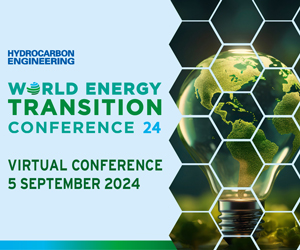Texas, once synonymous with oil and refineries, is now emerging as a pioneer of renewable energy. From golden fields of sun to vast wind plains, the state is boldly transforming its energy landscape. This green revolution attracts investors and talent, redefining Texas’s role on the global stage.
For decades, Texas has been the beating heart of the American oil industry. Today, initiatives in solar and wind energy are gaining momentum, addressing environmental and economic challenges. Projects in methanation and biomass valorization illustrate this ambitious transition.
Introduction to the energy transition in Texas
The Texas, long recognized as the stronghold of oil in the United States, is undergoing a period of significant energy transformation. Traditionally dominated by refineries and the petrochemical industry, the state is now turning towards renewable energy, particularly wind and solar. This transition is fueled by the expertise of oil workers and the adoption of innovative technologies that promote sustainable development. This paradigm shift is not only a response to environmental concerns but also an economic strategy aimed at diversifying energy sources and ensuring sustainable growth for the state’s 30 million residents.
How do oil workers facilitate the transition to renewable energy?
Oil workers in Texas play a crucial role in the state’s energy transition. With their technical skills and experience, they bring valuable expertise to renewable energy projects. For example, engineers and technicians from the oil industry are redirecting their efforts towards the construction and maintenance of wind and solar facilities, bringing with them a deep knowledge of energy infrastructure.
Moreover, the culture of safety and efficiency developed in the oil sector is a major asset for renewable projects. Oil workers are accustomed to managing complex operations and maintaining high safety standards, essential skills for the success of renewable energy projects. This professional transition is supported by training and retraining programs, facilitating the integration of these workers into the new energy landscape.
According to a recent study, this skill reorientation contributes not only to the growth of renewable energy but also to job stability in Texas. By diversifying their skills, oil workers ensure a smooth transition to more sustainable and environmentally friendly jobs. Discover the story of Lucien Romani, a renewable energy engineer who perfectly illustrates this transition movement.
What innovative technologies are driving renewable energy in Texas?
The rise of renewable energy in Texas is largely attributable to innovative technologies developed in the state. One of the most remarkable advancements is the integration of energy storage systems that address the intermittency of renewable sources like wind and solar. These technologies ensure a continuous power supply, which is essential to meet the growing demand of 30 million residents.
Furthermore, Texas is investing heavily in smart grids and transmission infrastructures, facilitating the transportation of renewable energy produced in remote areas to urban centers. This modernization of the electrical grid is essential to maximize efficiency and reduce energy loss. Additionally, innovations in biofuels and methanation also contribute to the diversification of renewable energy sources.
The adoption of these technologies is supported by public-private partnerships and substantial investments. For example, a recent report highlights that Texas is leveraging its vast natural resources and technical expertise to become a leader in renewable energy in the United States.
What are the flagship renewable energy projects in Texas?
Texas is home to numerous innovative projects aimed at promoting renewable energy. One of the flagship projects is the construction of large wind farms in the Northern and Central regions of the state. These farms benefit from Texas’s favorable geographical conditions, including consistent and strong winds, making them particularly effective for wind energy production.
Another major project includes the deployment of large-scale solar panels, especially in plains and desert areas where sunlight is optimal. These solar installations are often integrated into industrial complexes, thereby creating synergies between energy production and the energy needs of local businesses.
Additionally, Texas is exploring carbon capture and storage technologies to reduce the carbon footprint of its energy projects. These initiatives are supported by public policies promoting investments in green infrastructures and encouraging research and development in the field of bioenergy.
A concrete example of this dynamic is the Renewable Energy Hearing project, which brings together experts and industry stakeholders to discuss the advancements and challenges of renewable energy in Texas.
What are the economic impacts of the energy transition in Texas?
The energy transition in Texas has profound repercussions on the state’s economy. The diversification of energy sources creates new job opportunities and stimulates technological innovation. The development of renewable energy attracts both national and international investments, thereby strengthening Texas’s position as a global energy leader.
New energy infrastructures generate jobs across various sectors, including manufacturing, construction, and maintenance of renewable facilities. Furthermore, this transition fosters the emergence of startups and companies specializing in green technologies, contributing to Texas’s entrepreneurial ecosystem.
A recent report indicates that investments in transmission infrastructures to support renewable energy have reached record levels, despite ongoing challenges such as changing regulations and fluctuations in the oil market.
Moreover, the transition to renewable energy improves Texas’s energy security by reducing dependence on fossil fuel imports. This energy autonomy enhances the state’s economic resilience in the face of geopolitical crises and oil price fluctuations.
What challenges does Texas face in accelerating the adoption of renewable energy?
Despite significant progress, Texas faces several challenges in its transition to renewable energy. One of the main obstacles is the historical dependence on the oil industry, which still influences energy policies and hinders the rapid adoption of renewable technologies. Existing infrastructures, primarily designed for oil and gas, require costly adaptations to integrate the new energy sources.
Another major challenge lies in the need to modernize the electrical grid. Smart grids need to be upgraded to effectively manage the integration of variable renewable energies such as wind and solar. This modernization requires significant investments and close coordination among various stakeholders.
Moreover, political fluctuations can affect the stability of investments in green infrastructures. For instance, shifting policies under different administrations can create uncertainty for investors, slowing down the pace of renewable project development.
Finally, there are challenges related to social acceptance and the environmental impact of new installations. Renewable energy projects, while essential, often require careful planning to minimize impacts on local ecosystems and communities.
How do public policies support the development of renewable energy in Texas?
Public policies play a crucial role in supporting and promoting renewable energy in Texas. Since the early 2000s, the state has implemented initiatives aimed at encouraging the adoption of green energy. For example, the Senate Bill 20 of 2005 was key legislation that financially supported the construction of thousands of miles of electrical cables needed to carry energy produced by wind turbines.
These policies include tax incentives for companies investing in renewables, as well as grants for research and development of innovative technologies. Moreover, Texas collaborates with academic institutions and research centers to develop new energy solutions tailored to local specifications.
Energy transition policies also include training and retraining programs for oil workers, facilitating their integration into the renewable energy sector. These initiatives are crucial to ensure that the transition does not come at the expense of existing jobs, but rather serves as an opportunity to create new sustainable professions.
A positive current assessment shows that despite challenges, public policies in Texas continue to actively support the development of renewable energy, reinforcing the state’s position as a leader in this field.
What is the impact of partnerships and collaborations on the growth of renewable energy?
Partnerships and collaborations between the public and private sectors are essential for the growth of renewable energy in Texas. These alliances allow for pooling resources, exchanging knowledge, and sharing the risks associated with innovative energy projects. For instance, collaborations between oil companies and green tech startups promote the emergence of hybrid solutions that combine the strengths of both sectors.
Additionally, international partnerships play a key role in introducing new technologies and best practices. Texas, as a global energy hub, attracts foreign investors and experts, enriching the local ecosystem with skills and innovation.
Collaborations with academic institutions and research centers are also crucial. These partnerships stimulate research and development in the fields of bioenergy and energy storage technologies, ensuring a steady flow of innovations to support the growth of renewable energy.
A good example of this dynamic is the project mentioned in the evolution of renewable energy in Australia, where international collaborations have enabled new heights in renewable energy production.
What does the future hold for renewable energy in Texas?
The future of renewable energy in Texas looks promising, supported by a combination of skilled workers, innovative technologies, and favorable public policies. The continued growth of wind and solar capacities, along with the expansion of energy storage infrastructures, positions Texas as a key player in the global energy landscape.
Efforts to diversify the state’s energy mix contribute not only to reducing greenhouse gas emissions but also to creating a more resilient and sustainable economy. Furthermore, Texas’s leadership in energy transition could serve as a model for other regions dependent on fossil fuels.
However, to fully realize this potential, it is crucial to overcome the persistent challenges related to infrastructure, policy, and social acceptance. With a collective will and continued collaboration among all stakeholders, Texas is well-positioned to play a decisive role in the renewable energy revolution in the United States and beyond.
Articles similaires
Thank you!
We will contact you soon.














